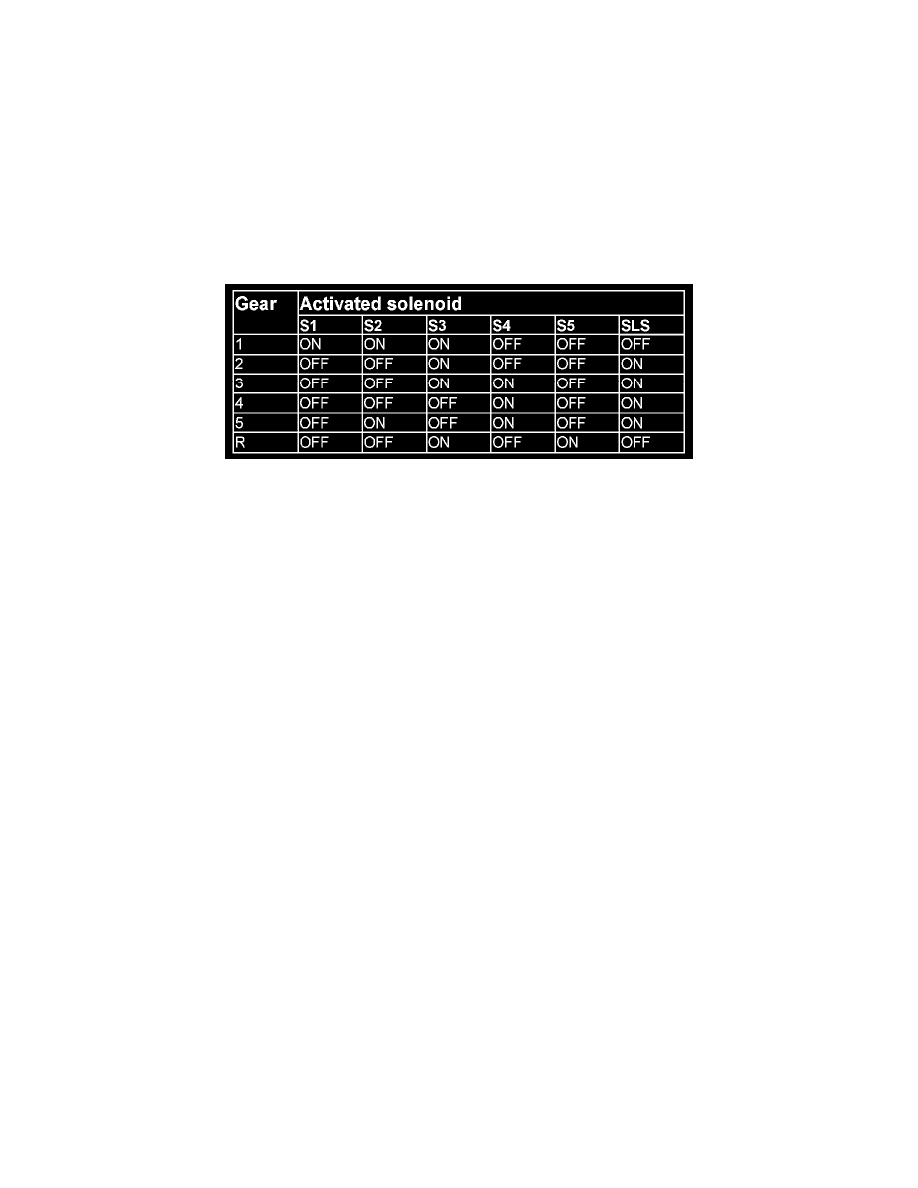V70 2.4 L5-2.4L VIN 61 B5244S (2001)

Control Module: Description and Operation
Function
Function
Controlling the shift solenoids when shifting
Shifting and the lock-up function is controlled by activating the solenoids in a specific pattern. The solenoids S1-S5 determine which gear is to be
used and the SLS, SLU and SLT solenoids determine engagement by adjusting hydraulic line pressure. The basic parameters for the different shifting
points are the accelerator pedal (AP) position and the vehicle speed. The shift quality is decided by the control of torque.
The pressurization of the clutches and the brakes are adjusted by reading the changes of the speed of the transmission input shaft during the shifting
process and comparing them to the values calculated in the transmission control module (TCM). Two shifting patterns can be selected, normal
conditions and winter mode (selected using the button).
In normal mode shifting and lock-up occur at relatively low speeds to reduce fuel consumption. In the event of rapid accelerator pedal movements, the
transmission control module (TCM) automatically shifts to sport mode.
Shifting program
Shifting program
Economy mode
When driving at normal acceleration the transmission control module (TCM) uses a pre-set shifting program, optimized to shift for economy driving.
This shifting program is suitable for "normal" driving which provides earlier up shifts and lock-up. In addition the transmission oil pressure is adjusted
to provide smooth gear engagement.
Sport mode
The transmission switches from economy mode to sport mode if the accelerator pedal (AP) is pressed down quickly. The conditions are that the
throttle opens and the vehicle speed exceeds 50 km/h. As soon as the accelerator pedal (AP) is moved less quickly economy mode is resumed. In the
sport mode shifting program the shifting points are adjusted to provide the best possible performance. Down shifting occurs at lower engine speed
(RPM).
Extreme mode
At wide open throttle (WOT) the kick-down function is engaged and the transmission shifts to the lowest possible gear. In this way a boost of power is
achieved when overtaking for example.
Winter mode
Winter mode is selected using the (W) button on the top panel of the gear selector assembly. Winter mode enables starting off in a high gear to
prevent the wheels from spinning on a slippery surface. This mode can also be used in other difficult situations in which the driver needs more direct
control over gear selection. Depending on the gear position, the following combinations can be obtained:
-
D The car starts in 3rd gear. Automatic shifting between 3rd, 4th and 5th gears
-
4 The car starts in 3rd gear. Automatic shifting between 3rd and 4th gears occurs earlier than in economy mode, D position. 5th gear is locked out
-
3 The car starts in 3rd gear. There is no upshifting or downshifting
-
L The car starts in 2nd gear. There is no upshifting or downshifting.
The warning lamp on the dashboard lights when winter mode is selected.
If kick-down is activated in Winter mode, the transmission uses all gears for maximum performance.
Other modes
Adaptation
The transmission control module (TCM) monitors each shift during all driving conditions to fulfill optimal and smooth shifting. This is carried out by
the control module either lowering or increasing the hydraulic line pressure used during the shift itself. The changed pressure levels are stored in the
control module memory when the car has been switched off and are retrieved on start-up. This provides improved shifting comfort and increased
service life. Adaptation occurs when the following conditions have been met:
-
Throttle opening is steady
-
Oil temperature between 65°C and 110°C.
Catalytic converter start
